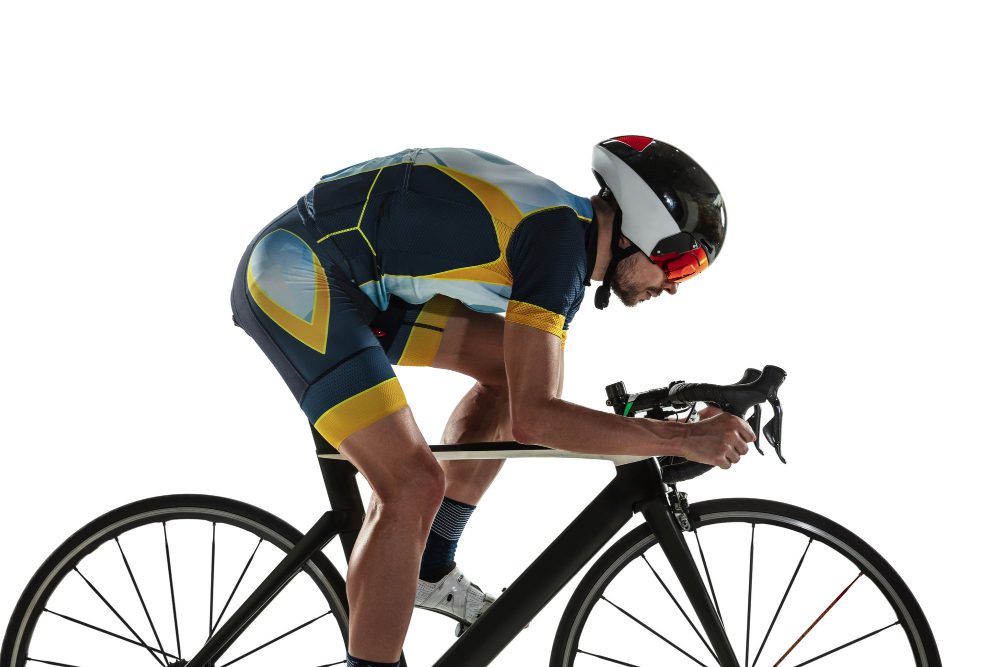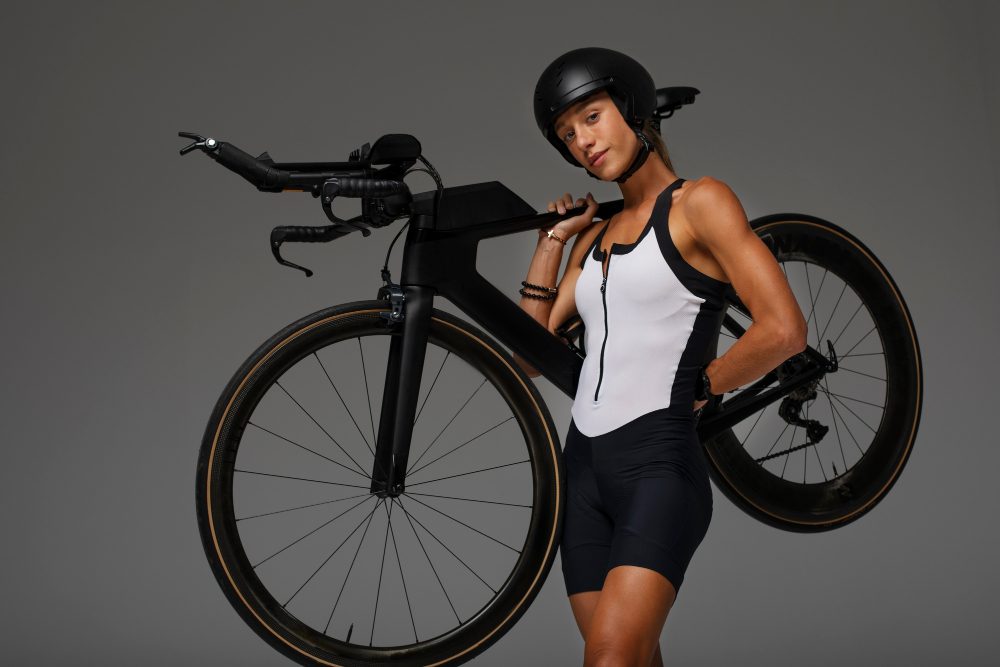Does a triathlon bike make a difference?
Introduction
When it comes to competing in a triathlon, choosing the right equipment is crucial. The bike leg of a triathlon requires a significant amount of time and effort from triathletes, making it essential to have a bike that is optimized for this specific sport. While any bike can be used in a triathlon, investing in a triathlon-specific bike, commonly known as a tri bike, can make a notable difference in performance. In this article, we will explore the reasons why a triathlon bike can make a difference and discuss its advantages over other types of bikes.
The Triathlon Bike Advantage
Triathlon bikes are specifically designed to enhance performance during the cycling leg of a triathlon. Compared to traditional road bikes, triathlon bikes offer several distinct advantages that can significantly impact a triathlete’s overall performance.
Aerodynamics: One of the key differences between a triathlon bike and a road bike is the focus on aerodynamics. Triathlon bikes feature aero handlebars, sleek frames, and integrated components that reduce drag and allow for a more streamlined riding position. This design helps to minimize wind resistance, enabling triathletes to ride faster and conserve energy for the subsequent disciplines.
Time Trial Position: Another notable feature of triathlon bikes is the forward-leaning, aggressive riding position known as the time trial position. This position optimizes power transfer and allows for efficient pedaling while maintaining a low frontal profile. By reducing the frontal area exposed to the wind, triathletes can maintain higher speeds with less effort.
Integrated Storage: Triathlon bikes often come equipped with integrated storage solutions. These compartments allow triathletes to carry essential nutrition and race equipment conveniently and aerodynamically. Having easy access to fuel and tools during the race eliminates the need to reach for items stored in pockets or backpacks, saving valuable time and energy.
Endurance and Comfort
While aerodynamics and speed are crucial aspects of triathlon biking, endurance and comfort also play significant roles in a successful race. Triathlon bikes are designed with features that prioritize the comfort of the rider during long-distance races.
Saddle Design: Triathlon bike saddles are contoured to reduce pressure points and provide comfort during extended periods of riding. The shape and padding of these specialized saddles allow triathletes to maintain a comfortable position without sacrificing performance.
Geometry: Triathlon bikes often have specific frame geometries that promote a more relaxed and comfortable riding position. Compared to road bikes, triathlon bikes tend to have a steeper seat tube angle, which places the rider in a position that engages different muscle groups and reduces strain on the back and neck.
“A triathlon bike is like a Swiss Army knife for triathletes – it combines speed, aerodynamics, and comfort into one powerful machine.”
The Time Advantage
In a sport where every second counts, the time advantage provided by a triathlon bike can be a game-changer. The combination of aerodynamics, efficiency, and integrated storage allows triathletes to shave off valuable minutes during the bike leg.
Aerodynamic Savings: Studies have shown that riding a triathlon bike can save anywhere from 10 to 30 watts of power compared to a road bike at high speeds. This reduction in drag translates to faster times and less fatigue, enabling triathletes to perform better in the subsequent disciplines.
Transition Efficiency: The integrated storage options on a triathlon bike allow for quicker and smoother transitions. Having easy access to nutrition and equipment eliminates the need to stop or search for items, ensuring a seamless transition from bike to run.
What kind of bike do I need for triathlon?
When it comes to participating in a triathlon, having the right bike can make a significant difference in your performance. Triathlons involve three different disciplines: swimming, cycling, and running. In this article, we will focus on the cycling aspect and explore what kind of bike is needed for a triathlon.
1. Road Bike
A road bike is a popular choice for triathlons, especially for beginners. These bikes are designed for speed and efficiency on paved roads. They have lightweight frames, narrow tires, and drop handlebars that allow you to maintain an aerodynamic position. Road bikes are versatile and suitable for both training and racing.
2. Triathlon/Time Trial Bike
If you are looking to take your triathlon performance to the next level, investing in a triathlon or time trial (TT) bike can be beneficial. These bikes are specifically designed for triathlons and time trials, with aerodynamics being a key focus. They typically have a more aggressive geometry, integrated aerobars, and deep-section wheels to reduce drag and save energy.
3. Hybrid Bike
If you are new to cycling or on a budget, a hybrid bike can be a suitable option. These bikes combine features of road and mountain bikes, providing a comfortable ride on various terrains. While they may not offer the same level of aerodynamics as road or triathlon bikes, they can still be an efficient and practical choice for shorter triathlons.
4. Mountain Bike
For off-road triathlons or courses with challenging terrain, a mountain bike may be necessary. These bikes have sturdy frames, wide tires, and suspension systems, making them suitable for rough trails. However, keep in mind that mountain bikes are generally heavier and less efficient on paved roads compared to road or triathlon bikes.
Ultimately, the type of bike you choose for a triathlon will depend on various factors, such as your experience level, budget, course conditions, and personal preferences. It’s essential to test different bikes and find one that offers a comfortable fit and meets your specific needs.
Remember: Regardless of the type of bike you choose, make sure it is properly fitted to your body measurements and consider accessories such as clipless pedals and aero helmets to further enhance your performance.
Here is a quick comparison table summarizing the main features of each bike type:
| Bike Type | Key Features |
|---|---|
| Road Bike | Lightweight, aerodynamic, narrow tires |
| Triathlon/Time Trial Bike | Aggressive geometry, integrated aerobars, deep-section wheels |
| Hybrid Bike | Combines features of road and mountain bikes |
| Mountain Bike | Sturdy frame, wide tires, suspension system |
When it comes to choosing the right bike for a triathlon, it’s crucial to consider your specific needs, goals, and budget. Consulting with experienced cyclists or visiting a bike shop can provide valuable insights and help you make an informed decision.
Do I need a tri bike for a triathlon?
When preparing for a triathlon, many athletes wonder whether they need to invest in a specialized triathlon bike or if their regular road bike will suffice. While both options have their advantages and disadvantages, it ultimately comes down to personal preference and individual goals.
Benefits of a Triathlon Bike
A triathlon bike, also known as a tri bike, is specifically designed for triathlons and can offer several advantages over a traditional road bike. These benefits include:
- Aerodynamics: Tri bikes are built with aerodynamics in mind, featuring a more aggressive geometry, narrower handlebars, and aero bars that allow for a streamlined position, reducing wind resistance.
- Efficiency: The aerodynamic design of a tri bike enables riders to maintain a higher speed with less effort, making it ideal for longer distances.
- Comfort: Triathlon bikes often come equipped with features such as adjustable saddle positions and integrated storage options, ensuring a comfortable ride during the bike leg of the race.
Considerations When Using a Road Bike
While a triathlon bike has its advantages, a road bike can still be a viable option for a triathlon, particularly for beginners or those on a budget. However, it’s important to keep the following considerations in mind:
- Comfort: Road bikes are generally designed for comfort over long distances, offering a more relaxed riding position compared to the more aggressive stance of a tri bike.
- Cost: Investing in a triathlon bike can be expensive, and if you’re just starting out in triathlons, it may be more cost-effective to use your existing road bike.
- Versatility: A road bike can be used for various cycling activities, such as group rides and general fitness, whereas a tri bike is specifically optimized for triathlon races.
“For serious triathletes looking to improve their performance, investing in a triathlon bike can make a noticeable difference in both speed and efficiency.”
Ultimately, the decision to use a triathlon bike or a road bike for a triathlon depends on your goals, budget, and level of commitment to the sport. If you’re aiming for top performance and have the financial means, a tri bike may be worth the investment. However, if you’re just starting out or participating in shorter distances, a road bike can still provide a great racing experience.



